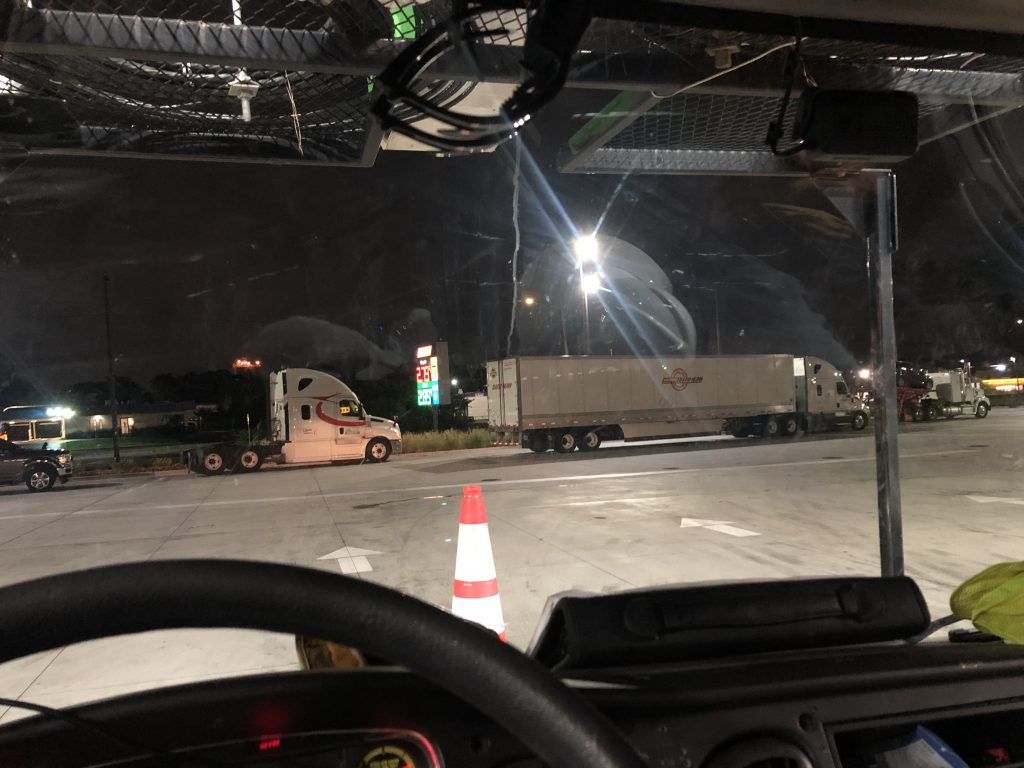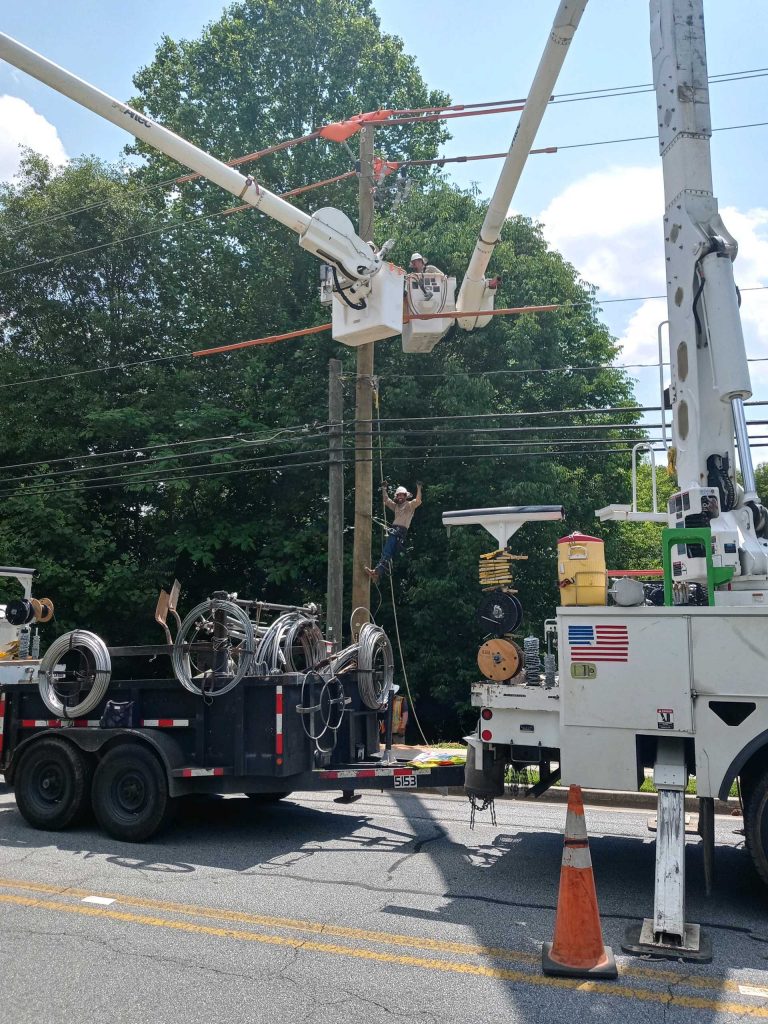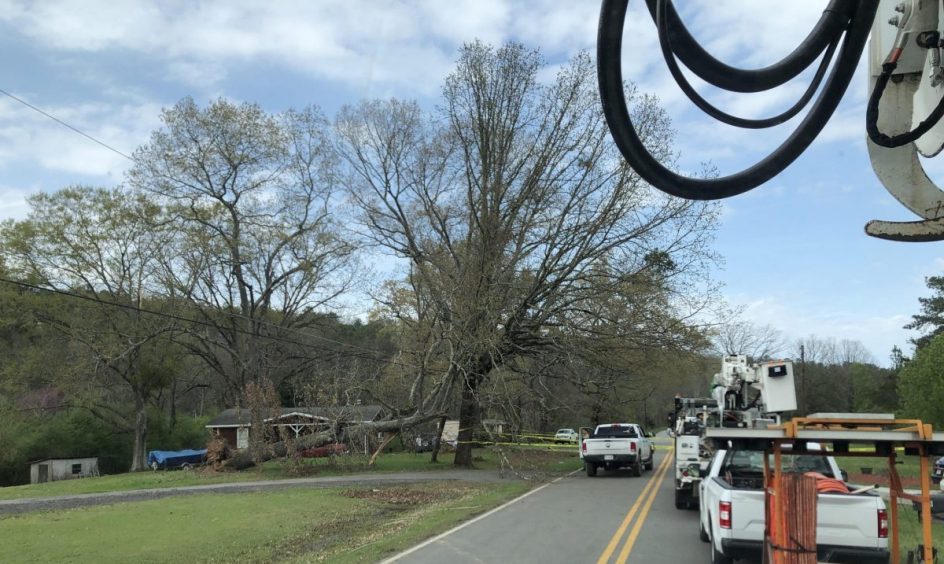The first question you’ll get asked when applying for jobs is: “Do you have your CDL?” Earning a Commercial Driver’s License is a critical part of getting a job out of line school. Without one you will not be hired. This is because no contractor or EMC wants to hire a groundman that isn’t legally allowed to drive the line or bucket trucks. And, as the new guy, you will be driving.
It wasn’t obvious to me at first just how much driving is involved in linework. In the year I’ve worked in this industry, I’ve driven more than I’ve done anything else because the crew must get to wherever the work is.

That may mean a show-up south of Atlanta, followed by a thirty minute drive through downtown traffic to the local power company headquarters to pick up a pole, then venturing across the city to get the trucks to the worksite.
Rarely do I ever know exactly where we’ll be, but I do know that I must safely drive a gigantic utility truck while towing a 45′ pole through downtown Atlanta. Sharp and tight turns, avoiding unaware pedestrians, and even backing the truck down a side street lined with cars on either side. You’ve got to be focused. Checking your mirrors, listening and watching your backer, and trying to find the easiest way to get the truck in the best position to do work.
You’re in fantastic hands at the Elite Lineman Training Institute if you need to earn your CDL. Greg Bradford is a phenomenal instructor and with over twenty years of commercial driving experience he can get anyone comfortable moving a tractor trailer. He took me, someone who never backed anything larger than a U-Haul, and got me straight backing, offset backing, alley docking, and parallel parking the ELTI rig. He got me ready to take and pass my skills and road tests to achieve my CDL, but that nerve-wracking test was nothing compared to the nerves I got early on in my job after graduating.
The instructors call it “seat time;” time actually doing the skill. I had none of that, and the first time I had to back a material trailer through a muddy, improvised cul-de-sac at a construction show-up my crew had a field day laughing at me try to get the trailer where I wanted it. Three months of hauling poles and material trailers through Atlanta and I can pretty much put them where I want. It took time, and it took a lot of getting used to such a large vehicle.
You cannot drive a utility truck like a regular car. It has blind spots on its blind spots, you have to constantly be aware of low-hanging tree limbs and wires, and you’ve got to maintain or create following distance because you weigh 30,000+lbs. I learned a great deal at ELTI about safely driving a tractor trailer, and here are three tips that helped me get more comfortable on the job:
- Adjust your mirrors – take the time to get them just right.
- Slow down anytime you see break lights – there’s a lot you cannot see, better to be going slower when you run into an odd jam.
- Know what side of the truck your gas tank is on – circling around the gas station is not fun.






Well Done Gordon, very proud of you!!!